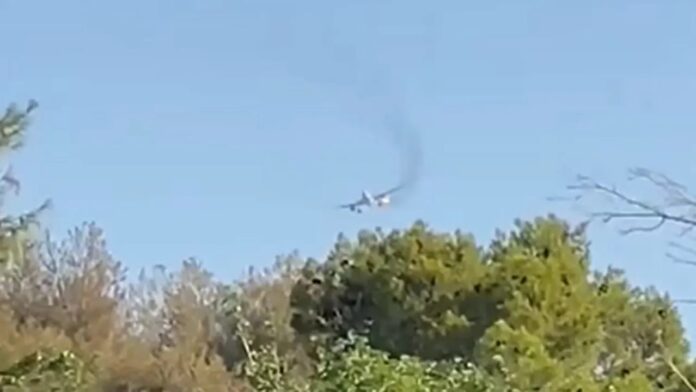Incident Overview: The American Airlines Emergency Landing
On June 25, 2025, a dramatic scene unfolded over Las Vegas as American Airlines Flight 1665 encountered a mechanical issue shortly after takeoff. The flight, which was scheduled to travel from Harry Reid International Airport (LAS) to Charlotte Douglas International Airport (CLT), was compelled to make an emergency return shortly after departure. Eyewitness reports and video footage revealed alarming details: dark smoke billowed from one of the plane’s engines, accompanied by visible sparks.
Details of the Flight
The incident involved an Airbus A321 with 153 passengers and six crew members on board. The flight had only just taken to the skies when the crew detected a mechanical malfunction. The airline swiftly communicated the situation, noting the professionalism of their crew in managing the event. The aircraft was able to taxi back safely to the gate under its own power, and passengers exited the aircraft without incident, with no injuries reported.
Eyewitness Accounts
Eyewitness accounts were pivotal in painting a picture of the event. Videos captured dark smoke trailing from the aircraft’s right engine, presenting an alarming sight for those observing. This visual evidence underscored the seriousness of the situation, which had the potential to escalate dramatically. One witness, present during the flight, expressed relief at witnessing the safe return of the plane.
The Emergency Response
Upon landing, emergency protocols were activated. The airline expressed gratitude towards the flight crew for their decisive actions that ensured the safety of everyone involved. American Airlines confirmed that the aircraft would be taken out of service for a thorough evaluation by their maintenance team. This meticulous approach is vital, as it emphasizes the airline’s commitment to safety and the well-being of its passengers.
Regulatory Oversight
The Federal Aviation Administration (FAA) quickly acknowledged the incident and confirmed that they would conduct an investigation to ascertain the cause of the reported engine issue. The agency’s involvement is standard procedure in such situations, as they aim to uphold safety standards and ensure the integrity of aviation operations.
Historical Context
Harry Reid International Airport, formerly known as McCarran International Airport, has seen its share of aviation incidents over the years. However, this occurrence serves as a stark reminder of the inherent risks associated with air travel, even in an age of advanced technology and stringent safety regulations.
Industry Implications
This recent event raises important questions about aircraft maintenance and safety protocols within the airline industry. It underscores the necessity for airlines to be proactive in evaluating their fleets and ensuring stringent inspection processes are followed. With public confidence in air travel being paramount, such incidents can impact perceptions of airline safety.
Conclusion of Events
The harrowing events of June 25 may have concluded favorably, with all passengers unharmed and the aircraft safely back on the ground. However, the ramifications of this incident will likely resonate within the airline industry as stakeholders and regulators assess and address any underlying issues. Each flight carries with it inherent risks, yet the swift response of the flight crew and the efficient handling of the emergency reflect the preparedness and resilience of the aviation sector.
